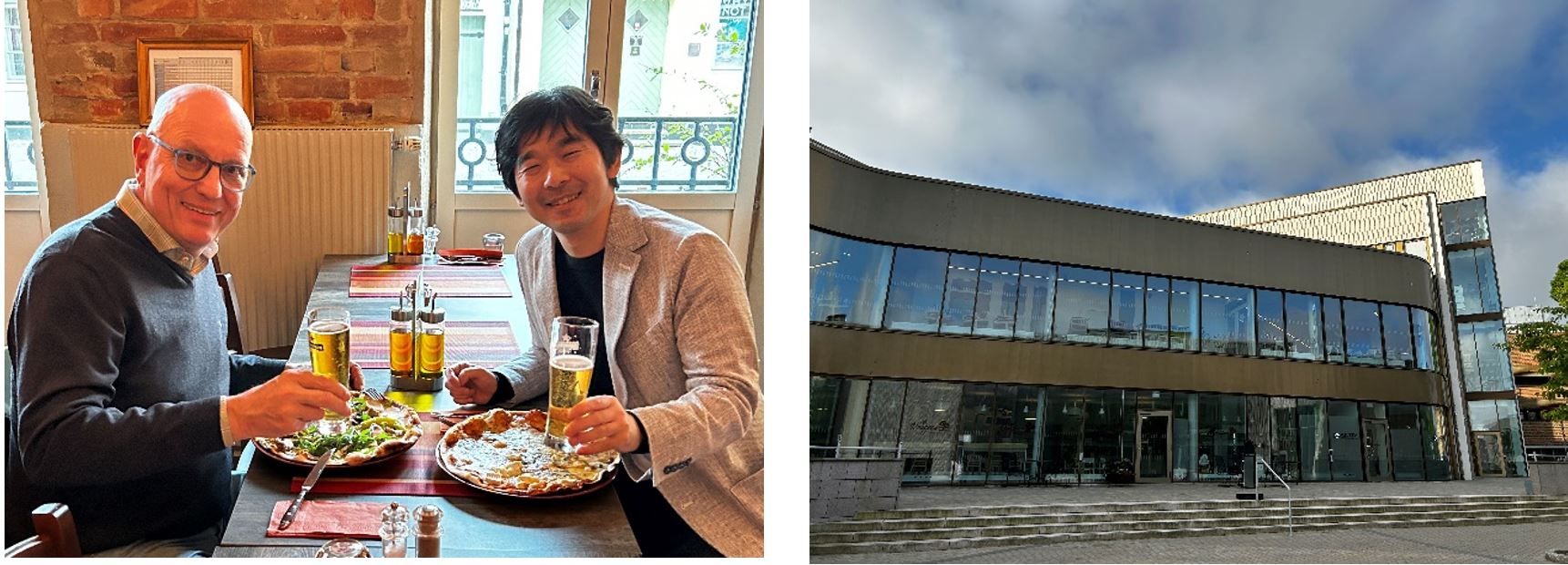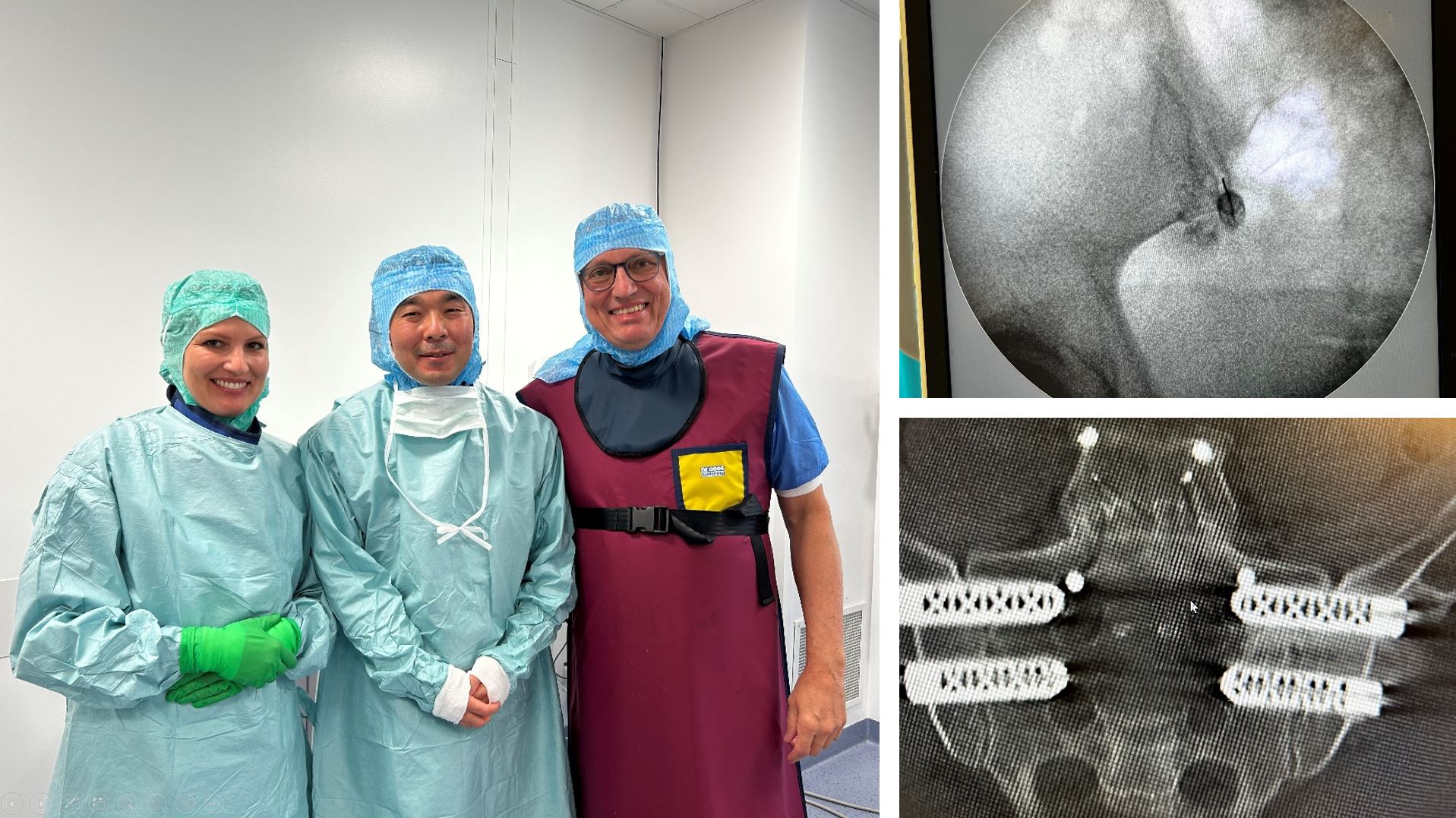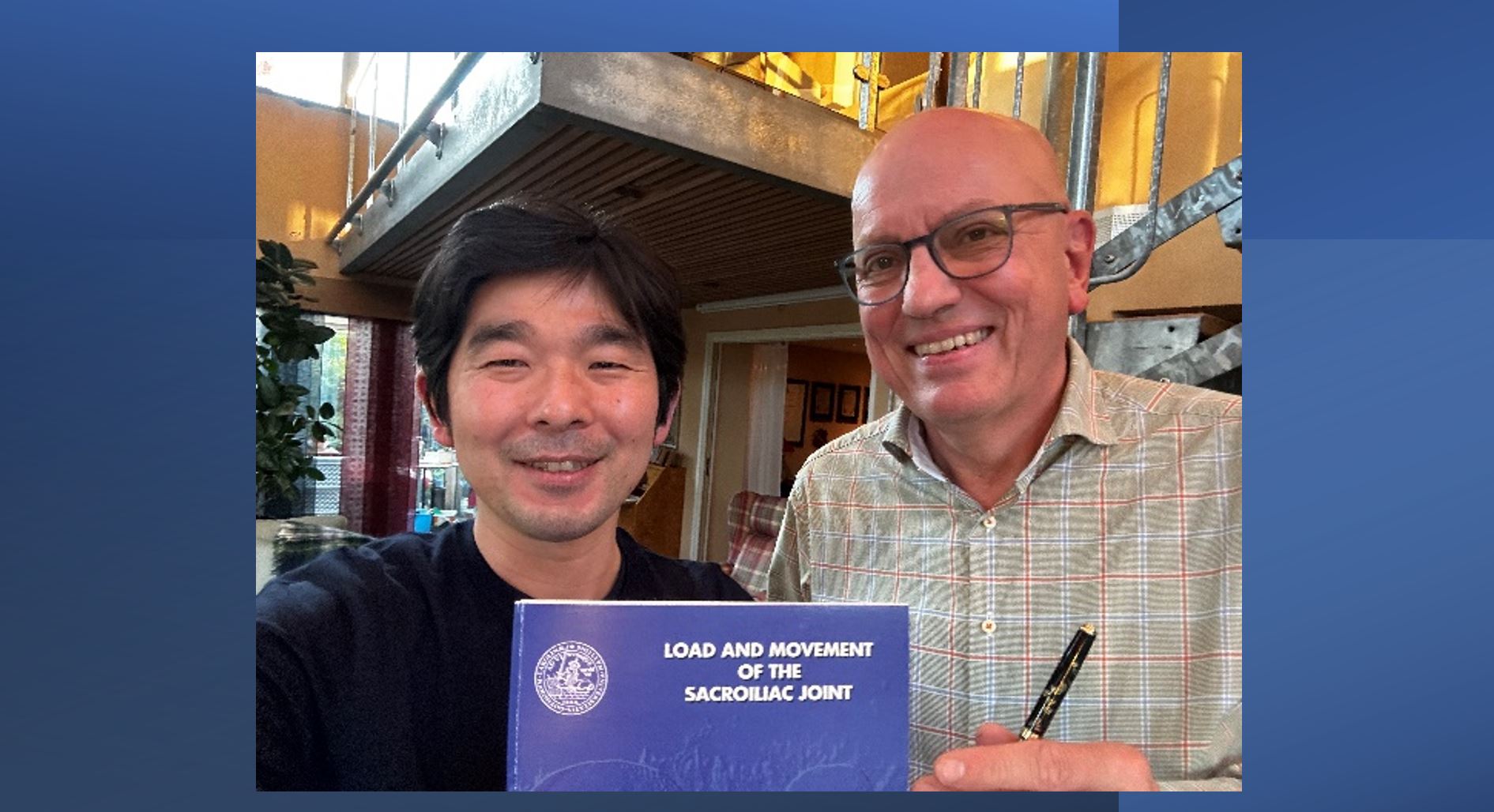Meet The Experts - Vol. 1
Report of Daisuke Kurosawa
29. May – 2. June, 2023
I visited the hospital in Sweden to learn clinical practice from Dr. Bengt Sturesson, who is the most experienced sacroiliac surgeon in Europe. There were many very useful lessons that I learned during my visit.

Some of these are as follows;
- The essence of sacroiliac pathology is inability, not instability, hypermobility or hypomobility.
- Based on Dr. Sturesson’s experiences with pelvic stabilization using an external fixator, the essence of sacroiliac joint (SIJ) dysfunction is inability to apply load. This is the true indication for surgery; if the patient can walk and apply load, even if the joint irritation is severe, it is not an indication.
- Post-partum SIJ pain is considered an indication for surgery after 1.5 years.
- We surgeons must not lose the best time for surgery. Some people commit suicide because they can no longer lead a social life. It is important to focus on SIJ inability and not misjudge the indication for surgery.
- I have been too focused on finding objective evidence of irreversible SIJ dysfunction that needs a surgical treatment. Of course, I will continue to study the anatomy and pathology of the SIJ. But on the other hand, I have a societal mission to improve our clinical judgment, have confidence in my own clinical experience, find inability joints quickly, and perform surgery aggressively when necessary.
- The patient is discharged the day after iFUSE. However, weight bearing should be 50%. This is for 6 weeks. The patient is trained to walk with canes, to climb and descend stairs, and is instructed not to put weight on the affected side.
- Out of about 600 surgical cases (iFUSE), only 6 cases (about 1%) required revision. He showed me the revision cases. Based on Dr. Sturesson's numerous scientific research papers and the clinical presentation I observed in this visiting, I felt that this result was valid and true. I am convinced that such good results can be achieved by a true sacroiliac specialist in clinical practice.
 He gave me everything I need to learn now. He taught me with his whole heart and soul. And as we saw cases of severe SIJ problems and followed their stories, I realized that we are on a mission to treat patients with such terrible symptoms, whether in Europe or Asia. I sincerely appreciate Dr. Sturesson's support and look forward to his continued academic support in the future.
He gave me everything I need to learn now. He taught me with his whole heart and soul. And as we saw cases of severe SIJ problems and followed their stories, I realized that we are on a mission to treat patients with such terrible symptoms, whether in Europe or Asia. I sincerely appreciate Dr. Sturesson's support and look forward to his continued academic support in the future.

I then met with Dr. Thomas Kibsgård in Oslo for the first time in 4 years.
He had a discussion with me about the results of a recent RCT study on sacroiliac fusion. I will not comment on the results until his colleagues present at the Melbourne conference (https://www.worldcongresslbp.com/program/) and the paper is published.
Randers EM, Gerdhem P, Dahl J, Stuge B, Kibsgård TJ. The effect of minimally invasive sacroiliac joint fusion compared with sham operation: study protocol of a prospective double-blinded multicenter randomized controlled trial. Acta Orthop. 2022 Jan 3;93:75-81.
However, it is an amazing result and a great study with a lot of controversy. My deepest respect to Dr. Thomas Kibsgård and his colleague Dr. Engelke Randers for leading such a study. I also respect Dr. Kibsgård for his educational suggestions on revision cases and his methods. I hope to stay in touch with him for a long time. I will learn from his experience.
Prof. Britt Stuge also spent an hour answering my questions about conservative therapy. She also taught me her SIJ manipulation technique. Of course, she does not recommend SIJ fusion surgery. I respect her for that because she is a physical therapy professional. There are cases that require surgery, but of course it is important to do the best we can with the highest level of conservative treatment.
I look forward to seeing Dr. Kibsgård and Prof. Stuge again in Melbourne.
Conflict of interest: None. This visiting was entirely of my own will and personal interest.